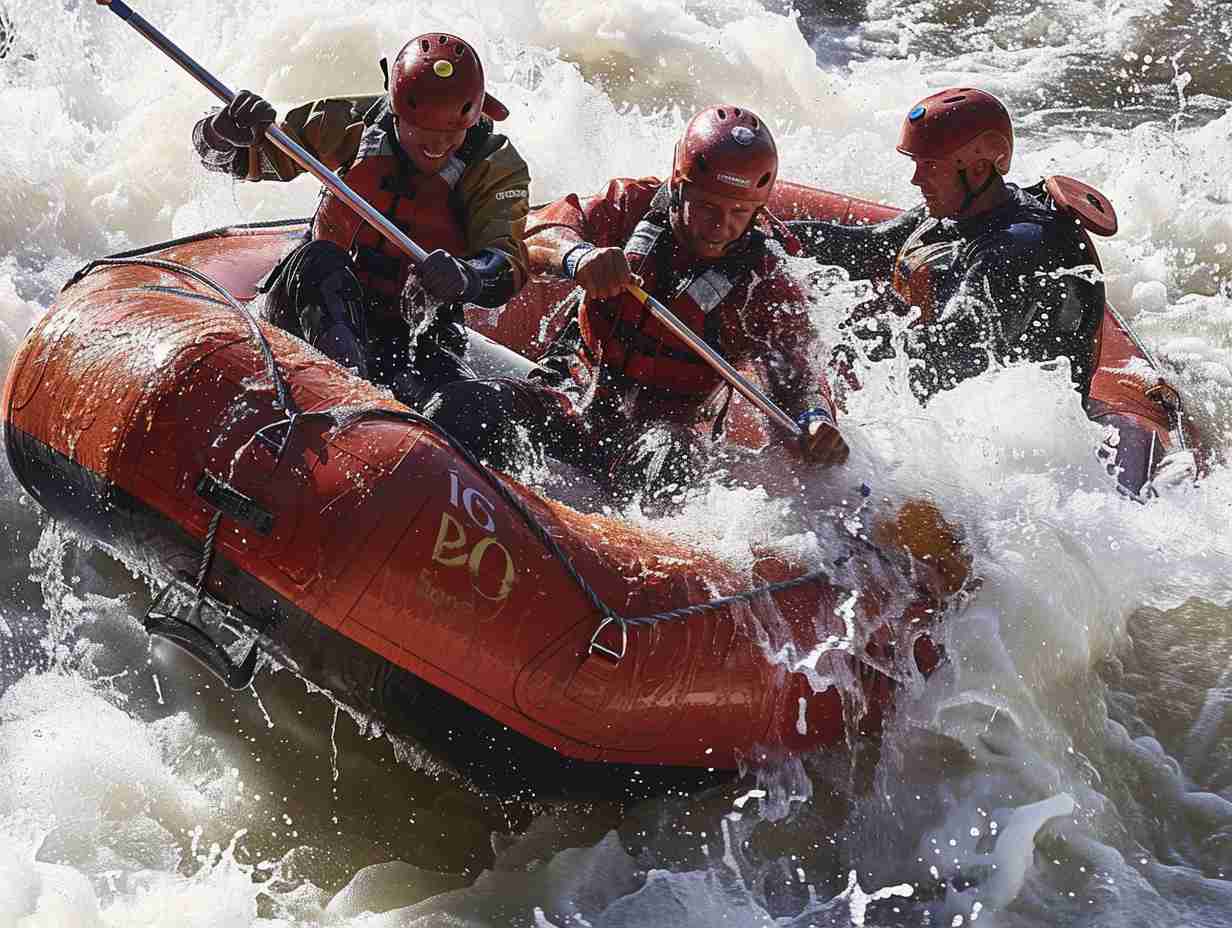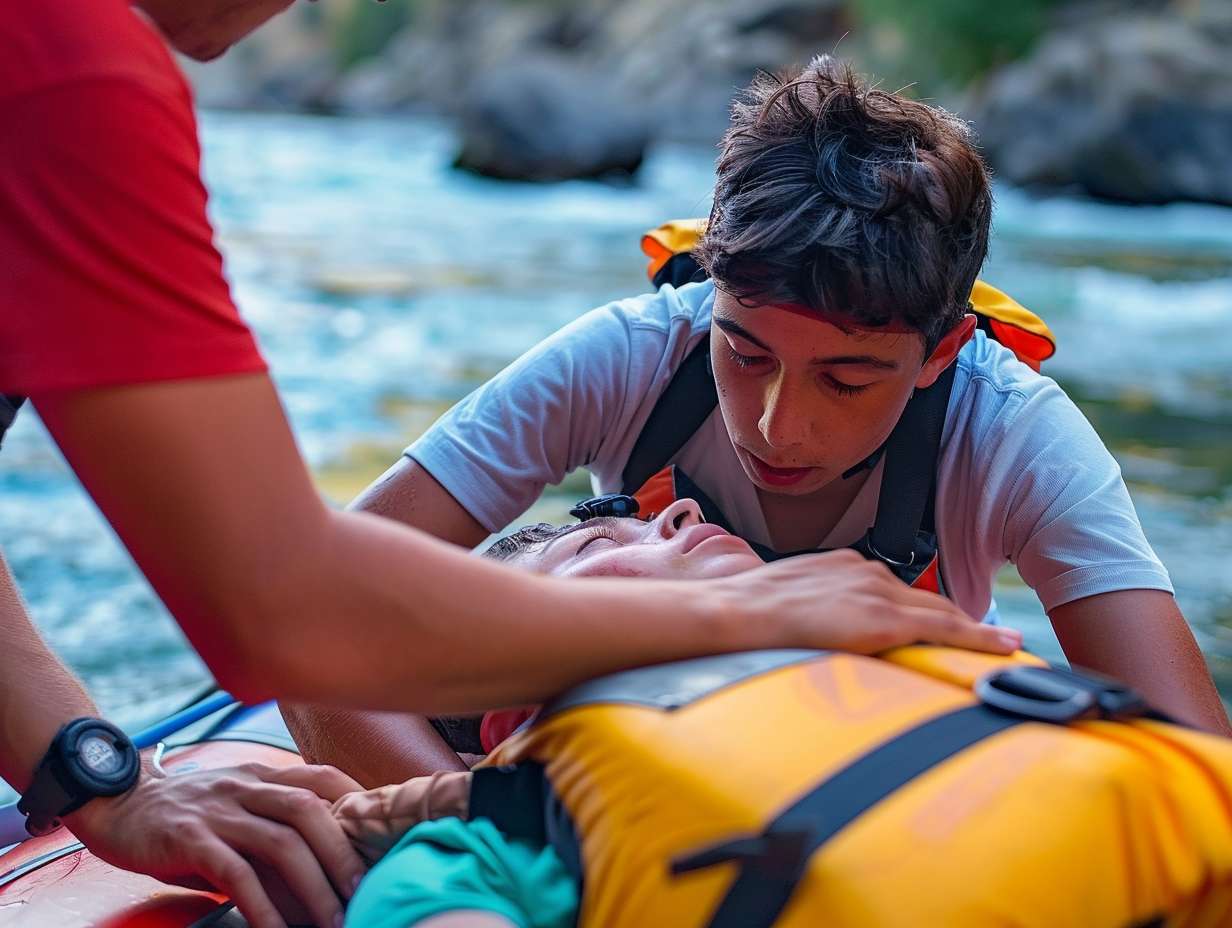
Survival Skills for Rafters

Prepare yourself for a journey on the water where challenges can be constant and conditions ever-changing. As a rafter, piloting rivers requires more than just paddling skills.
From swift water rescue techniques to essential first aid knowledge, being equipped with survival skills can mean the difference between a thrilling adventure and a potential disaster.
Are you ready to tackle the unpredictable elements and emerge as a prepared and knowledgeable rafter?
Key Takeaways
- Master river navigation to anticipate hazards and maneuver effectively.
- Prioritize safety with swift water rescue techniques and proper gear.
- Establish clear communication and emergency strategies for effective response.
- Maintain and repair gear regularly for optimal safety during rafting adventures.
River Navigation Techniques
To navigate rivers successfully, rafters must pay close attention to the flow patterns and obstacles in their path. Understanding how the river bends and where potential hazards lie is essential for a safe journey. Keep an eye out for rocks, fallen trees, and strong currents that could tip the raft or cause it to capsize.
By staying alert and reading the water ahead, you can anticipate changes and adjust your course accordingly. Remember to steer clear of strainers, which can trap the raft and pose a serious danger. Practice maneuvering around obstacles in calm waters before tackling more challenging rapids.
With experience and careful observation, you can master the art of river navigation and enjoy a thrilling yet safe adventure on the water.
Swift Water Rescue Methods

Utilize swift water rescue techniques to efficiently and safely assist individuals in distress on the river. When conducting a swift water rescue, remember to prioritize your safety first.
Approach the individual in need with caution and always wear appropriate safety gear such as a helmet, life jacket, and gloves. Use a throw bag to reach out to the person or deploy a rescue rope system if they’re further away.
If you need to enter the water, employ swiftwater swimming techniques to navigate the currents effectively. Work as a team with other rafters to execute a successful rescue operation.
Practice these swift water rescue methods regularly to make sure you can respond quickly and effectively in emergency situations on the river.
Emergency Communication Strategies
In emergency situations on the river, effective communication strategies are essential for guaranteeing swift and coordinated responses to incidents.
When rafting, make sure everyone in your group knows how to use communication devices like whistles, radios, or hand signals to convey distress or safety messages. Establish clear signals for different scenarios beforehand to avoid confusion during emergencies. Remember to keep your communication concise and precise to relay important information quickly.
In case of separation or someone falling overboard, agree on meeting points and procedures to regroup efficiently. Practice communication drills before hitting the water to guarantee everyone is familiar with the signals and knows how to respond in crisis situations.
Essential First Aid Skills

During your rafting adventures, being equipped with essential first aid skills can be the key to responding effectively to injuries or medical emergencies that may arise on the river. Basic first aid knowledge such as CPR, wound cleaning, and bandaging can make a significant difference in an emergency situation.
It’s important to know how to assess injuries, control bleeding, and provide necessary care until professional help is available. Additionally, understanding how to recognize and respond to common issues like heat exhaustion, hypothermia, or dehydration is crucial for keeping yourself and your fellow rafters safe.
Consider taking a first aid course to enhance your skills and confidence in handling unexpected medical incidents during your rafting trips.
Gear Maintenance and Repair Basics
Maintaining and repairing your rafting gear is essential for ensuring a safe and enjoyable trip on the water. Here are some key tips to keep your gear in top shape:
-
Inspect Regularly: Check your equipment before each trip for any signs of wear and tear.
-
Clean Properly: Rinse off mud, sand, and salt after each use to prevent damage.
-
Repair Promptly: Fix any small issues immediately to prevent them from becoming bigger problems.
Frequently Asked Questions
What Are Some Common Wildlife Encounters Rafters May Face and How Should They Be Handled?
Encountering wildlife while rafting is common. Be cautious when facing animals like bears or snakes. Stay calm, avoid sudden movements, make noise to alert them, and slowly move away from the area.
Are There Any Specific Weather Patterns or Conditions That Rafters Should Be Aware of Before Heading Out on the Water?
Before heading out on the water, be mindful of weather patterns. Watch for sudden storms, swift currents, and changing winds. Stay informed and prepared. Your safety depends on being aware and ready for whatever nature brings.
How Can Rafters Ensure They Are Properly Prepared for Extended Trips on the River?
To guarantee you’re ready for long river trips, pack essentials like food, water, navigation tools, and emergency supplies. Check weather forecasts, inform others of your plans, know river conditions, and have the skills to handle various situations.
What Are Some Tips for Dealing With Fatigue and Exhaustion While Rafting?
When rafting, listen to your body for signs of fatigue. Stay hydrated, snack on energy-boosting foods, and take short breaks to rest. Pace yourself to avoid exhaustion. Prioritize safety by recognizing limits and staying alert.
Are There Any Specific Legal Regulations or Permits Required for Rafting in Certain Areas?
Make sure to check the specific legal regulations and permits needed for rafting in different areas. It’s essential to comply with local laws and requirements to guarantee a safe and enjoyable experience on the water.
Conclusion
As you navigate the unpredictable waters, remember to always be prepared for the unexpected.
By mastering survival skills such as river navigation, swift water rescue, emergency communication, first aid, and gear maintenance, you increase your chances of safely enjoying your rafting adventures.
So next time you find yourself in a challenging situation on the river, you’ll be equipped with the knowledge and skills needed to navigate through it smoothly.
Stay safe and keep rafting!
More information about
Affiliate information declaration: We may earn revenue from the products referred on this page and participate in affiliate programs.


